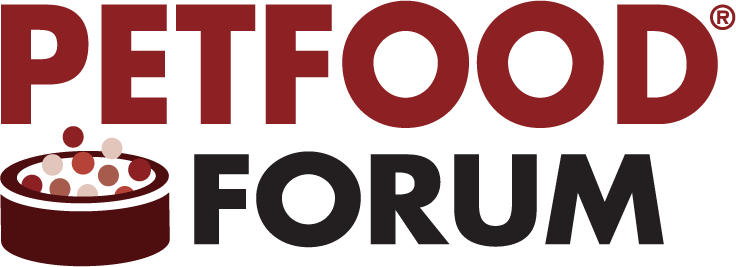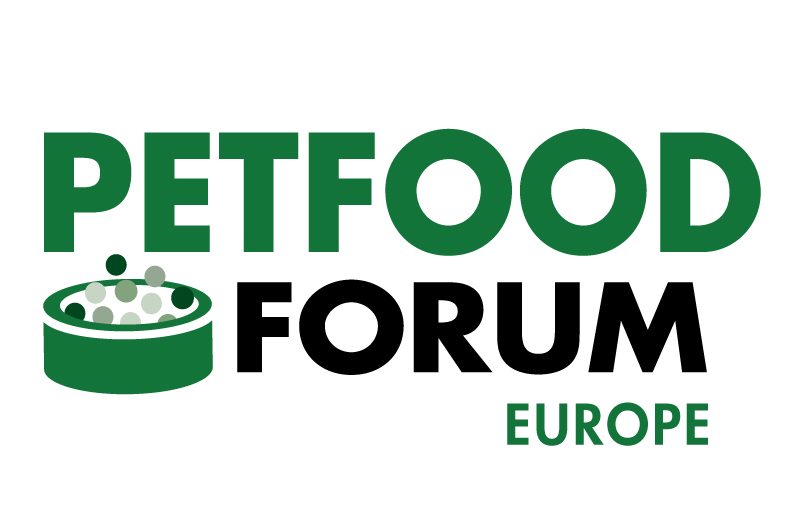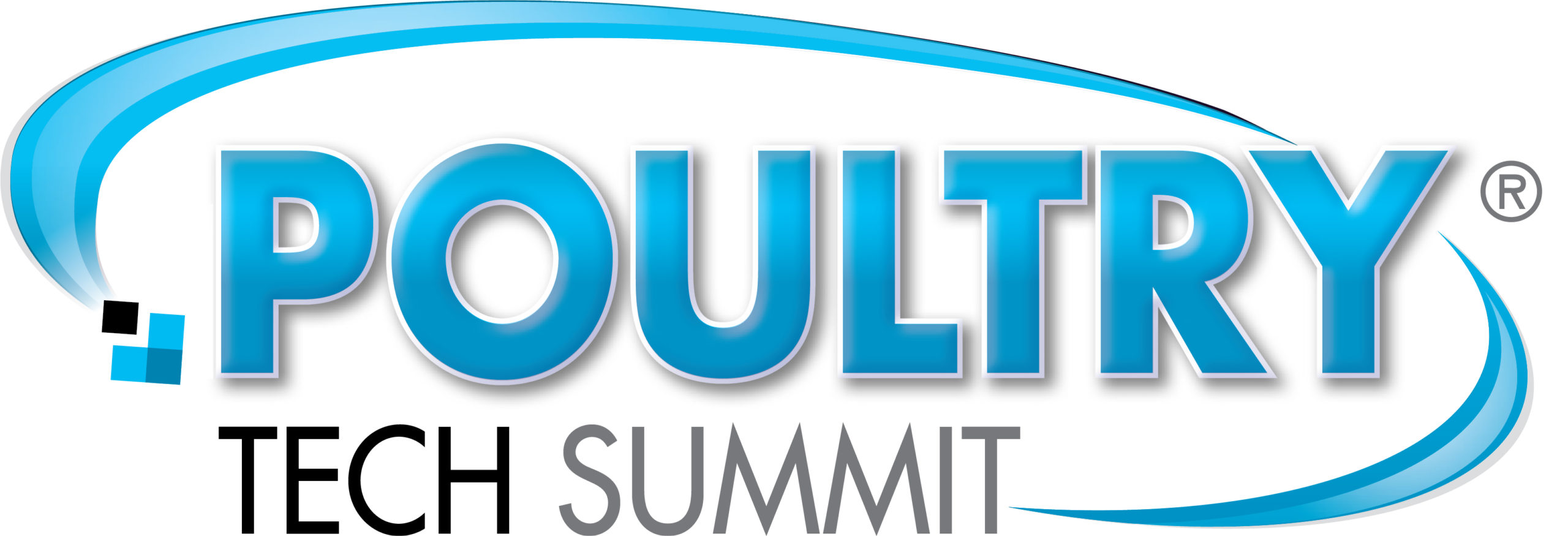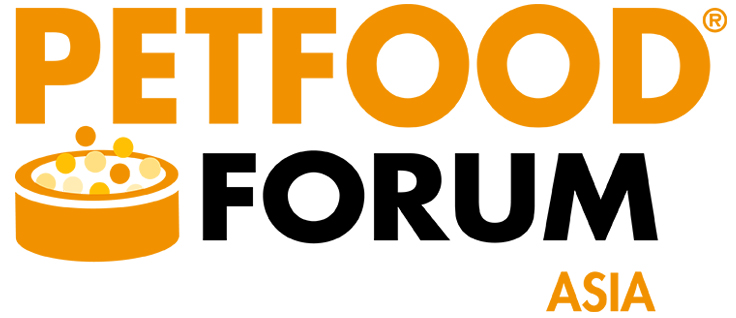Poultry Tech Summit 2023 schedule of events
Monday, November 6
5-6:30 p.m.
Registration
5-6:30 p.m.
Opening reception
Tuesday, November 7
7:30-8:30 a.m.
Registration
7:30-8:30 a.m.
Breakfast
8:30-8:45 a.m.
Welcome
Greg Watt, CEO and president, WATT Global Media
8:45-9:15 a.m.
Keynote: The digital frontier: Where will the future be?
Gordon Butland, director, G&S Agriconsultant
The COVID-19 and HPAI pandemics have increased our focus on biosecurity and increased acceptance of video-everything from farm visits to equipment repair diagnostics. Applications using AI and machine learning have taken major steps forward as well. Gordon will discuss where the digital revolution is impacting poultry production and where we can expect to see major impacts in the future.
9:15-10 a.m.
Innovation presentations
Artificial intelligence to automate broiler chick sexing
Bowen Cai, research scientist and managing director, Shanghai Xiashu Intelligent Company
A new chicken sex identification machine uses artificial intelligence to accurately identify the sex of one-day-old chicks. It uses industrial cameras to capture images of the vents of chicks, and the sex is identified through algorithms. The machine achieves an accuracy rate of over 99% and can identify 1,000-1,200 chicks per hour. This technology solves the problem of difficult recruitment, high labor cost, poor efficiency and low accuracy in the chick sex identification process.
Precision farming to streamline poultry operations
Marcel Sarzen, president and CEO, AGL Technology
Precision farming provides expert eyes and ears for poultry production facilities through camera, microphone and other internet of things (IoT) sensors. The platform offers growers and integrators fully automated insights and alerts, enabling them to address a wide range of production issues and optimization opportunities. The business model is a monthly subscription service, with positive return on investment (ROI) projected within the first year.
Next-generation coccidia monitoring
Meghan Bowman, product manager, Data Platform, Ancera
Coccidiosis remains a critical challenge in the poultry industry, leading to an estimated $10 billion in economic losses and impacting bird health and welfare. Successful management hinges on timely detection and cost-efficient control, as well as understanding the dynamics of Eimeria spp. populations in the production environment. This presentation will discuss a new way to monitor for coccidia through next-generation diagnostics and probabilistic modeling that classify Eimeria by size and quantify oocysts per gram (OPG) patterns.
10-10:30 a.m.
Networking break
10:30-11:30 a.m.
Technology presentations
Should we move to on-farm hatching of broiler chicks?
Erik Hoeven, general manager, NestBorn
On-farm hatching could help to reduce the various stressors associated with hatcheries, including hunger, thirst, handling and transportation. In this scenario, pre-incubated eggs are shipped to a broiler farm, where they are hatched directly on litter. On top of animal welfare improvements, this could also improve gut health and hatchability, as well as lower mortality.
Rapid Salmonella detection using nanoparticles: A promising technology for safer poultry products
Tina Conklin, vice president, technical services, Michigan Turkey Producers Cooperative
Problems concerning the presence of Salmonella in poultry production and processing have been a constant challenge. One possible reason for these unfortunate occurrences is the gap in monitoring the presence of the pathogen. The technology uses two types of nanoparticles: magnetic nanoparticles (MNPs) and gold nanoparticles (GNPs). This technology can be applied to thoroughly monitor the presence of Salmonella in various critical points on poultry farms and in poultry processing plants due to the rapid release of results thereby improving product safety.
Stop the burn: Fire detection in the poultry industry
Brandon Mulnix, director, commercial accounts, Prism Controls
Business interruptions from fires in the agricultural industry are driving up insurance costs to the point some farms may be uninsurable in the future. The cost of a fire event isn’t just affecting the farm that the event occurs at, but also the size of the claims raises the cost of premiums for all farms. The poultry industry needs a solution that reacts the earliest stages of fire, reduces the source of the fire, reduces the oxygen needed to fuel the fire and notifies resources to address the cause of the fire at the maintenance level.
11:30 a.m.-12 p.m.
Tech Talks
Wireless AI-enabled poultry house control system
Mark Maxwell, CEO, Agrimesh Technologies
Agrimesh interconnects the ventilation, heating, feed and water using wireless mesh technology. The system uses algorithms to optimize the environment, improve yields and reduce energy costs. The system dynamically analyzes inside conditions, outside conditions and weather forecasts to proactively adjust the ventilation and heating to constantly reach and maintain the pre-established setpoints.
Cobb Research Initiative: Furthering genetic progress through innovative technology
William Herring, Ph.D., vice president, research and development, Cobb Vantress
Research and genetic progress go hand-in-hand, and it is paramount to invest in new technologies and partnerships to further advance and implement new innovative production techniques, while also amplifying animal health and well-being. The Cobb Research Initiative is a program that seeks partnerships with researchers to further genetic progress and answer key issues facing the global poultry industry. Leaders in basic and applied research are sought to provide solutions and advance poultry care, health and welfare by leveraging advanced technology and innovative thinking.
12-1:30 p.m.
Lunch
1:30-2 p.m.
Innovation presentations
Alternatives to formaldehyde for decontaminating hatchery eggs
Paul Moyer, co-owner, Clean Works Corp., and Keith Warriner, professor, food science, University of Guelph
Pathogens associated with hatchery eggs can negatively affect embryo development and the health of subsequent chicks. Consequently, hatchery egg disinfection is applied at the start of incubation process and again at the transfer point. Formaldehyde, the main disinfection agent used, represents a hazard to workers and can negatively affect chick health. Hydroxyl-radicals are short lived but potent antimicrobial agents that can inactivate a broad spectrum of microbes with no negative effect on the surface being sanitized.
Developing the next economics software
Tristan Bond, data scientist and engineer, Agrinerds
Feed costs represent most of the operating costs associated with raising poultry. Because margins are generally narrow in the poultry industry, it is essential for producers to optimize ration selection. Tristan Bond will discuss Dynamic Nutritional Profitability software that integrates live commodity pricing through an API with ration formulas and poultry meat and/or egg pricing in order to identify current and estimated future profitability, providing producers with useful insights to better maximize the productivity and profitability of their operations.
2-2:30 p.m.
Tech Talks
Integrated Technologies Advancing RNA Vaccines for Poultry
John El-Attrache, Ph.D., global director of science and innovation at Ceva Animal Health
RNA vaccines hold great promise for the prevention and control of infectious diseases in poultry. John El-Attrache, global director of science and innovation at Ceva Animal Health, will share examples of this promise as well as co-advancement of integrated technologies that makes the promise of RNA vaccines become a reality. Learn about several technologies that are rapidly enhancing the advancement of RNA vaccine utilization in poultry.
Merging biology and tech to create new capabilities
Ramin Karimpour, founder and CEO, TARGAN
New technologies like artificial intelligence, high speed vision cameras and microfluidics are progressing at an incredible rate. The poultry industry will make significant moves forward by integrating these new tools with advanced mechanical handling to create new capabilities within the hatchery and other areas of live production. Such integrated systems can address issues such as improving vaccine take, enhancing feed efficiency, driving house uniformity and alleviating labor constraints.
2:30-3 p.m.
Panel discussion
Technology and the future of HPAI control
Highly pathogenic avian influenza has become endemic in migratory birds around the globe. Heightened biosecurity, surveillance and rapid stamping-out efforts have not been able to keep the current outbreaks in Europe and North America from becoming the costliest these regions have ever experienced. We will explore new technological applications that could improve biosecurity or enhance resistance to the virus to prevent infection and stop the spread, as well as alternative methods for stamping-out existing outbreaks.
Featured panelists:
- John El-Attrache, Ph.D., global director of science and innovation at Ceva Animal Health
- Stephane Lemiere, DVM, global head of veterinary services, avian, Boehringer Ingelheim
- David Suarez, DVM, Ph.D., acting laboratory director, Southeast Poultry Research Laboratory, USDA ARS
3-3:30 p.m.
Networking break
3:30-4 p.m.
Tech Talks
The poultry industry’s evolution towards a more sustainable future
Fernanda Castro, DVM, Ph.D., technical service manager, Evonik
Gain insights into the progression of sustainability initiatives on poultry production and why this is an important topic in current day discussions. Fernanda Castro, DVM, Ph.D., technical service manager, Evonik, will touch on the effect that commonly employed practices have on reducing poultry production’s environmental impact and provide ways to measure and report sustainability achievements.
Using IoT data to drive economic value and performance on broiler sites
Alan Beynon, DVM, CEO, SenseHub Poultry
Data gathered in the broiler house is being used to make simple adjustments to farm management leading to significant impacts on economic performance and improvements in bird health and sustainability. On-farm examples will be demonstrated indicating actions that were taken and the improvements that were made from the deployment of wireless sensors at bird level in broiler sheds.
4-4:15 p.m.
Innovation presentations
Digital tools to improve layer management and performance
Rob Payne, Ph.D., director, poultry nutrition and technical services, Cargill Animal Nutrition
Managing bird performance in real-time is a goal of the poultry industry. However, two of the limitations continue to be the ability to capture data in real-time and the limited ability to accurately predict body condition. Near infrared (NIR) imaging could non-invasively quantify the weight of the fat pad in live laying hens, which helps producers develop custom nutrition programs to optimize flock performance. A cloud-based management tool will aggregate the performance data of a layer house over time, providing an opportunity to address challenges more proactively.
4:15-4:30 p.m.
Technology presentation
Inversion water cleaning: How water droplets can reduce pathogens, extend shelf life and save water
Twan Koenen, undine process expert, Innovative Water Concepts
Current cleaning methods in poultry processing plants use high volumes of water and are not very effective. Using microdroplets of water alone under the inversion water cleaning method tackles many of these challenges. Because of the microscopic size, the microdroplets can reach much deeper inside microcavities such as skin pores or feather follicles.
4:30-5:15 p.m.
Panel discussion
Overcoming the cage-free challenge
Many egg producers around the globe are converting existing facilities or building new ones to house cage-free hens in response to purchase pledges by major egg buyers, and, in some cases, legislation. Learn how some egg producers and technology providers are identifying the opportunities and finding solutions for the cage-free challenge.
Featured panelists:
- Craig Rowles, DVM, general manager, cage-free production, Versova
- Max Pfund, associate vice president, production, Herbrucks
- Bill Snow, national sales manager, Lubing Systems
5:15-7 p.m.
Networking reception
Wednesday, November 8
7:30-8:30 a.m.
Registration
7:30-8:30 a.m.
Breakfast
8:30-9:15 a.m.
Innovation presentations
Virtual reality to support poultry processing automation
Colin Usher, research scientist, Georgia Tech Research Institute
Tools based on virtual reality (VR) and augmented reality (AR) offer the opportunity to provide the collaborative environment needed to generate workable solutions for robotics and automation in poultry processing. The proposed prototype solution will use a virtual reality interface to connect a human operator with a factory robot designed to handle loading and transfer operations within a poultry processing plant. A VR/AR system will create an environment that supports automation to conduct these operations while providing a more comfortable operative experience for human personnel.
Deep serotyping to improve Salmonella preharvest monitoring
Kaitlin Karschner, technical product manager, Ancera
Salmonella is one of the leading causes of foodborne illnesses. Deep serotyping technology tracks granular changes in the Salmonella serotype profile across the supply chain with high throughput monitoring in a scalable approach. The platform provides analytics to food producers so they can understand the dynamics of serovars within their supply chain and improve their intervention efficacy and efficiency, ultimately reducing the load entering downstream processing facilities — including those of high risk such as Human Health Concern (HHC) serotypes.
Machine learning models for poultry weight forecasts
Casey Middlebrooks, data analyst and live production coordinator, Fieldale Farms Corporation; and Caroline Forest, vice president, business development and marketing, Intelia Technologies Inc.
Predicting bird weight is one of the constant challenges facing producers. Artificial intelligence, and namely machine learning models, can perform weight forecasts as accurately, if not more, than a person could, with greater resilience to anomalies and consistency over time. This will help free workers from performing this repetitive task and make predictions more objective. The weight forecasting tool is currently undergoing tests at Fieldale Farms.
9:15-9:45 a.m.
Tech Talks
How heat on demand boosts sustainability, poultry welfare
Shawn Engstrom, product engineer, Diversified Agriculture LLC
Heaters and their controls used to manage the environment for rearing animals has remained relatively unchanged for decades. New technologies that apply heat when and where needed will reduce the amount of fuel used to heat houses, saving the grower money. At the same time, house temperature uniformity will be improved as heaters will run only where it’s needed. This will result in dryer floors, spread birds evenly throughout the house and improve overall animal welfare. Decreasing fuel consumption reduces the burning of fossil fuels and the generation of greenhouse gas emissions. When looking across entire complexes the amount of CO2 reduction can make a major impact on the environment.
Leveraging generative AI to run causal analysis in a poultry operation
Evan Sadlon, data science manager, MTech Systems
Poultry operations are complex ecosystems with numerous variables affecting bird health, production and overall profitability. Traditional data analysis methods can only take us so far in understanding the intricate cause-and-effect relationships within these operations, but MTech has built a platform in the intersection of internet of things (IoT), causal analysis and generative AI. By joining these three technologies, we are able to answer questions such as: What are the effects of different pre-heating regiments on average daily gain?; How does the amount of starter per bird change the inflection point of the growth curve?; and, When should I be running different ventilation programs to minimize feed conversion ration (FCR)?
9:45-10:15 a.m.
Panel discussion
Increasing automation and food safety in poultry processing
Labor availability and cost are major challenges for poultry processors, at the same time that food safety regulations are changing. Learn about new technologies being developed to help poultry processors automate some labor-intensive tasks and improve food safety outcomes.
Featured panelists:
- Juan DeVillena, Ph.D., senior vice president, quality assurance and food safety, Wayne-Sanderson Farms
- Colin Usher, research scientist, Georgia Tech Research Institute
- Oliver Hahn, CEO, Baader USA
10:15-10:45 a.m.
Networking break
10:45-11:15 a.m.
Innovation presentations
Yeast as a feed additive to prevent Salmonella in poultry
Bill Potter, Ph.D., food safety technical advisor, Elanco
Live yeasts work to modify the oxygen content in the intestinal tract while agglutinating to Salmonella fimbriae and reducing adherence of pathogens to intestinal walls. Research has shown significant reduction in Salmonella colonization in poultry ceca and other internal organs and reduced fecal coliforms from cloaca swabs. Long-term benefits include not only reduced Salmonella colonization, but also improved gut integrity and physiology, leading to benefits in bird growth performance.
Endolysins as an antibiotic alternative for necrotic enteritis
Kane Miller, Ph.D., CEO and founder, Axitan
Novel antibacterial enzymes, called endolysins, combined with unique strain of microalgae, could target pathogens, like Clostridium perfringens, the bacteria responsible for necrotic enteritis. Endolysins work by rapidly targeting and bonding to the cell wall of the target pathogen, quickly weakening the cell wall causing it to burst and safely disintegrate. This could help better manage necrotic enteritis, which has been historically managed through antibiotic supplementations in animal feed.
11:15-11:45 a.m.
Panel discussion
Improving health and welfare for broilers and turkeys
The global poultry industry is adjusting to using fewer antibiotics, more rigorous animal welfare schemes, and, in some cases, providing outdoor access for flocks while at the same time striving for continuous improvements in bird health, welfare and performance. Join a discussion of the challenges and opportunities facing broiler and turkey producers, and the promising technologies being researched and developed to foster continuous improvement.
Featured panelists:
- Andrew Bishop, DVM, Amick Farms
- Vernon Felts, Ph.D., senior director of live production, Butterball
- Enrique Montiel, DVM, Ph.D., DACPV, Anitox
11:45 a.m.-12 p.m.
Going forward
More information coming soon







